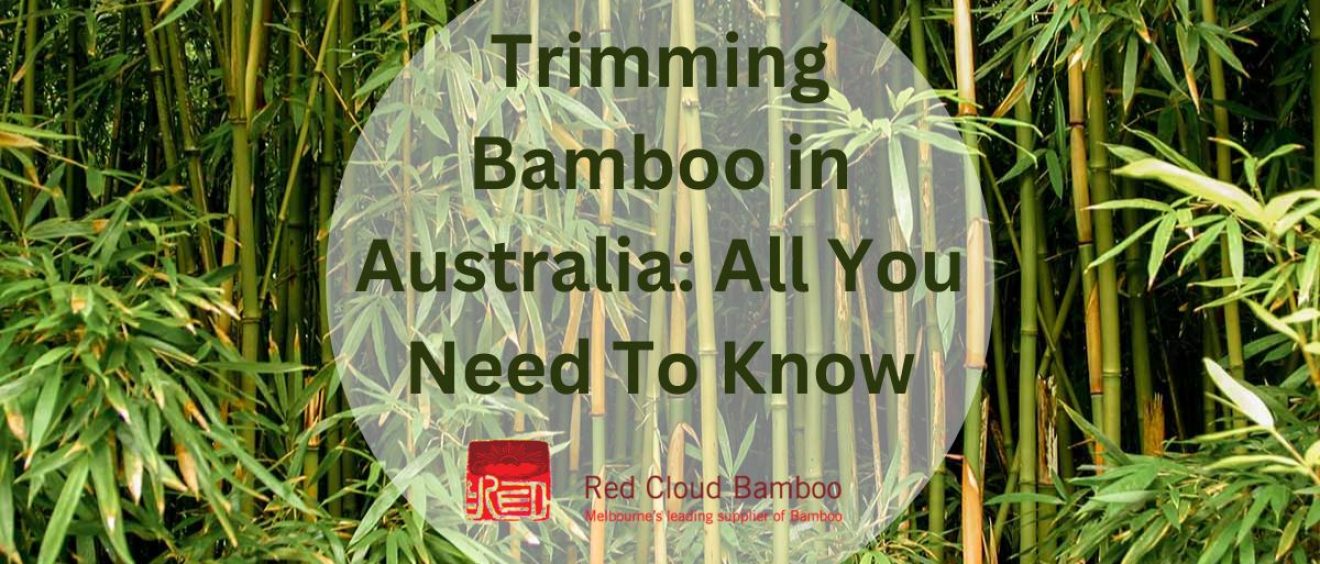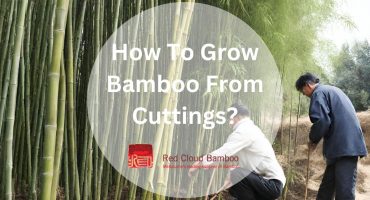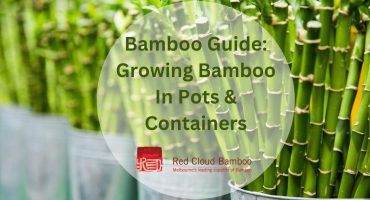
Trimming Bamboo in Australia
Proper trimming is an essential maintenance task for any home or business growing bamboo. As suppliers and distributors of quality bamboo products, at Red Cloud Bamboo, we understand better than most the importance of keeping bamboo well-groomed through regular trimming.
This article will provide homeowners and landscapers with guidance on how, when, and why to trim bamboo effectively to keep plants healthy, safe, and looking their best.
The following sections will cover tools and techniques for trimming, ideal timing based on Australia’s climate, and the differences between pruning and trimming bamboo.
How To Trim Bamboo
Tools Needed For Trimming Bamboo
One of the most important aspects of properly trimming bamboo is using the right tools for the job. While ordinary garden shears may seem like a good choice, they are not suited for cutting through the thick stalks and can damage the bamboo if not sharp enough. It’s best to trim bamboo with tools specifically designed for the task.
A good start is a pair of bypass pruners for thinner bamboo canes under 1cm in diameter. Loppers are also very useful, as their long handles allow for cutting stalks higher up without straining. For bamboos over 2cm wide, a pruning saw with a fine-toothed blade makes the cleanest cuts.
Having the proper pruners, loppers, or saw is key to completing a bamboo trim safely and efficiently. Be sure tools are very sharp for clean cuts, which help prevent rot or regrowth issues.
Bamboo Trimming Techniques
When trimming bamboo, it is important to use proper form for safe and effective cuts. All trims should be made just above a node, which are the joints where new shoots emerge. Avoid cutting below nodes to prevent unwanted sprouting.
With some practice, cuts can be made at a 45 degree angle across each node to allow water to drain off and reduce rot. Cuts should also face away from the direction new canes grow from, to stop water pooling in.
When using a saw, start cutting from the bottom of the stalk and pull the saw upward with the blade angled slightly outward. This helps ensure a clean shearing cut. Taking time to learn effective cutting technique will result in cleanly trimmed bamboo that regrows neatly rather than becoming misshapen.
When To Trim Bamboo
The ideal times for trimming bamboo are influenced by Australia’s climate zones and seasonal changes. In general, spring or autumn are best, after moderate rainfall which hydrates the bamboo without stress of peak heat or cold.
Late winter through early summer is usually when new bamboo growth emerges as temperatures start rising. Waiting until after the main flush of new canes appear allows for knowing exactly what needs trimmed back. Autumn is also preferable, as cooler months mean less stress on the bamboo from cutting and regrowth will occur slowly over winter.
Avoid trimming during heat waves or very dry spells, as this can shock the plant. Also be careful not to trim just before expected heavy rains, to prevent potential fungal or rot problems at freshly cut ends.
With a bit of climate-aware timing practice, bamboo trimming can easily fit into an Australian gardener’s regular seasonal maintenance schedule for healthy, neatly shaped bamboo for many years to come.
How is Trimming Bamboo Different Than Pruning
While trimming and pruning bamboo may seem similar, there is an important distinction between the two techniques. Trimming is primarily focused on maintenance to remove older growth and keep the plant tidy. Cuts are usually made higher up just to shape the bamboo.
Pruning bamboo differs in that it is done later in the season specifically to guide future growth and shape through more selective cuts lower down the stalks. It often removes entirely unhealthy or overgrown sections to improve overall structure and airflow.
Regular trimming helps control the spread and size of bamboo without sacrificing growth rate or health. Strategic pruning is less frequent but more sculpting in nature to redirect growth where desired or open up congested areas in the canopy.
Correctly identifying when trimming versus pruning is called for ensures bamboo receives the tailored care it needs throughout the seasons to thrive beautifully for many years ahead. Be sure to contact Red Cloud Bamboo professionals if ever unsure of the distinction.
Conclusion
By following proper techniques for bamboo trimming and understanding ideal timing based on your local climate, any home or business can enjoy attractively maintained bamboo for many seasons to come.
From choosing the right tools to learning effective cutting forms, this article outlined the best practices to safely trim bamboo for health and appearance.
“Discover the incredible world of bamboo and unlock its limitless potential. Join us at Red Cloud Bamboo, your trusted partner in all things bamboo. Contact us today at 0418 552 170 to explore the possibilities. Or check out our blog for more information about bamboo. Let’s embrace the resilience and beauty of bamboo together!”




